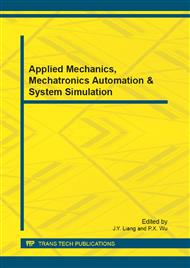p.601
p.606
p.611
p.616
p.621
p.626
p.631
p.635
p.639
Clock Skew Scheduling with Optimizing-Potential Prediction
Abstract:
This paper addresses the issue of increasing the efficiency of the clock skew scheduling. The past research focuses on reducing the time complexity of clock skew scheduling algorithm. However, even if an algorithm has time complexity close to linear, the flow iterations still consumes a lot of time. In this paper, a novel clock skew scheduling scheme with the feature of optimization-potential prediction is proposed. With this feature, the algorithm has timing complexity close to linear, and the number of flow iterations is decreased. The experiment results show that the proposed scheme consumes about half time and achieves almost the same optimization strength (13% highest frequency improvement of ARM1136J-FS) compared to the traditional.
Info:
Periodical:
Pages:
621-625
Citation:
Online since:
September 2012
Authors:
Keywords:
Price:
Сopyright:
© 2012 Trans Tech Publications Ltd. All Rights Reserved
Share:
Citation:


